Rebuild of a 1952 Train Craft 4- wheel caboose kit to match a prototype.
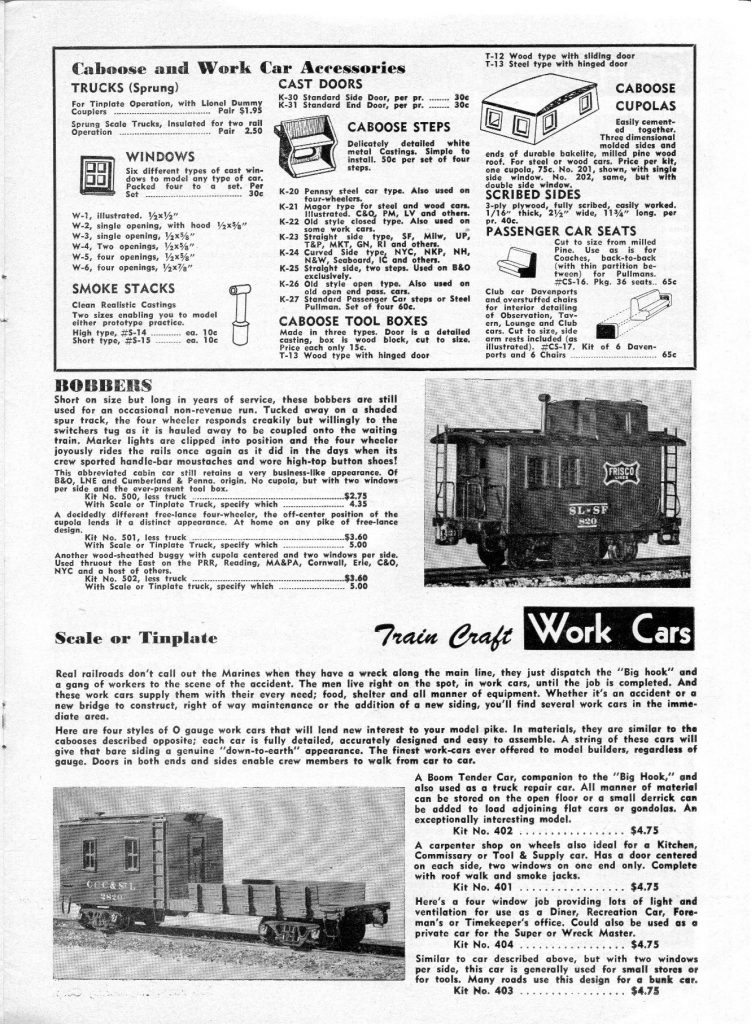
The caboose seen below was the third rebuild of Kit 502, first done in 1953. The original kit sold for $5.15, including NY City’s 3% sales tax. A bit costly for a 14 YO! My dad told me I was foolish to but it.
As a boy during the War years, I saw them on Staten Island Rapid Transit freight trains running between St. George and Arlington on the North Shore Subdivision. I wanted one for my little Lionel layout. When first built, it had large flanged wheels and dummy tinplate couplers. It wore a coat of brushed 4-10-M brown paint (no lettering) which my mother strongly objected to, because of its powerful smell. Not easy being an O gauge model railroader in your early teens!
Here is what the Train Craft kit caboose looked like by 1965, with replacement Northeastern scribed wood siding and added end windows. R&N was for Richmond and Northern, a model railroad name I used at the time. Richmond was the official name for Staten Island as a County of New York State.
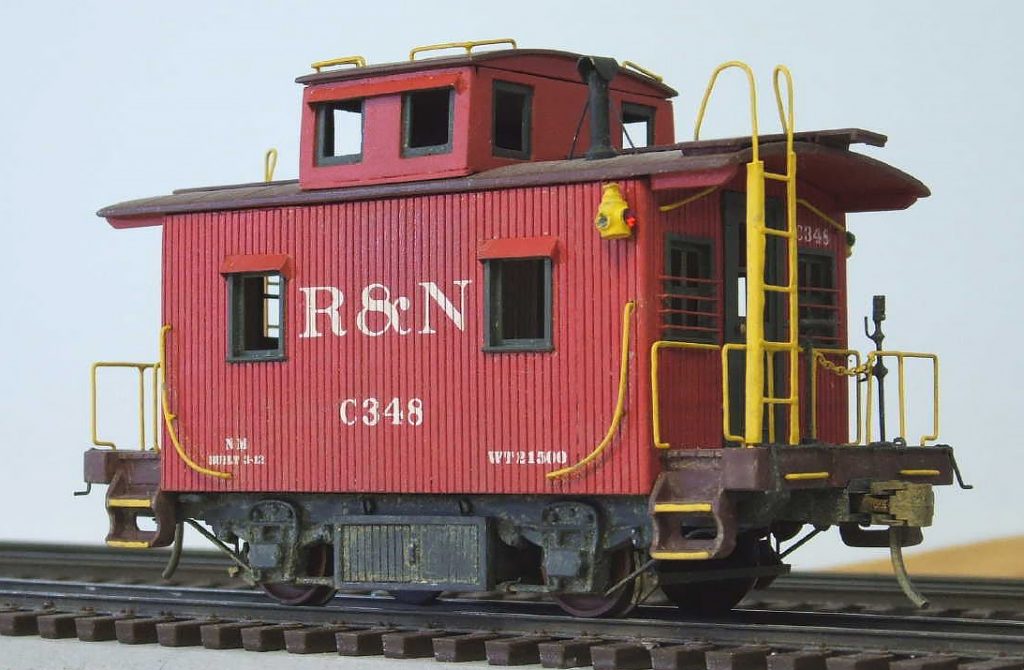
C384 followed the B&O Devil Red caboose paint job of the late 1940s. Added details included a backing whistle, uncoupling rods, markers and safety guards across the end windows.
While B&O 4-wheel K-1 class cabooses were used into the early 1950s at terminal operations in Chicago, Baltimore and on Staten Island, by that time many lost their cupolas. They were not needed in terminal work and as rot advanced with age, they were removed.
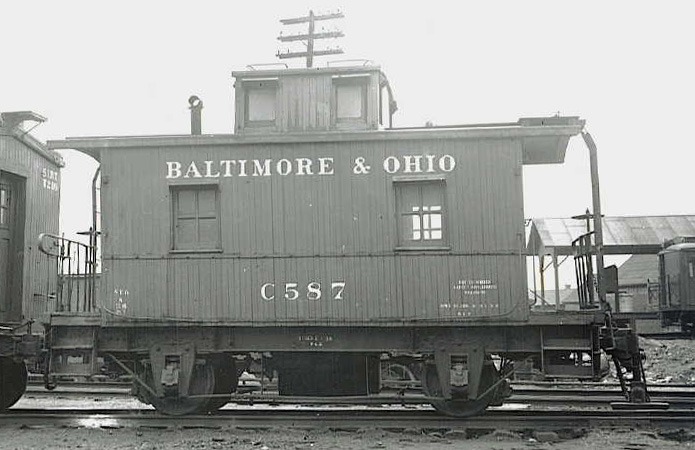
Yet B&O C587 still had its cupola this 1942 Staten Island photo. It also has a steel replacenet underframe and is painted in the early caboose color of B&O freight car brown.
Now, how close can I get to that with my ancient Train Craft caboose? Replacement B&O style caboose steps made by Train Craft were found on eBay, from a defunct hobby shop in Hungry Horse MT, selling old (and I mean REALLY OLD) original stock! With the B&O steps and a few more touches, something new will emerge.
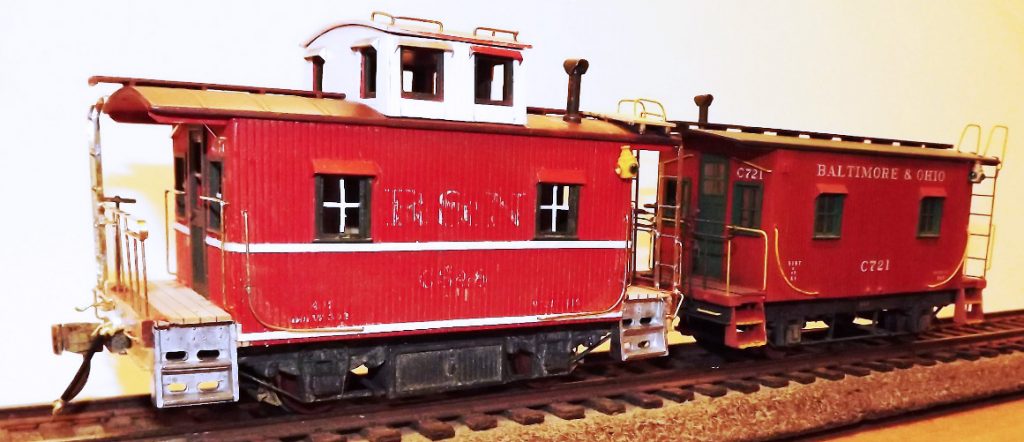
New end railings to B&O design were put on along with scratch brass ladders and new- grab irons. The cupola was sheathed with scribed styrene siding and the car body wrapped with a bolt embossed belt rails made with thin, rivet embossed styrene strips. Mullions were cut for the windows rather than buy eight replacement 4 pane sashes, to save the hassle of buying more stuff than I need to meet the minimum mail order requirements. The C721 is a scratch-built B&O K-1 caboose I made in the late 1980s. It was a model contest piece, with full interior and underbody details.
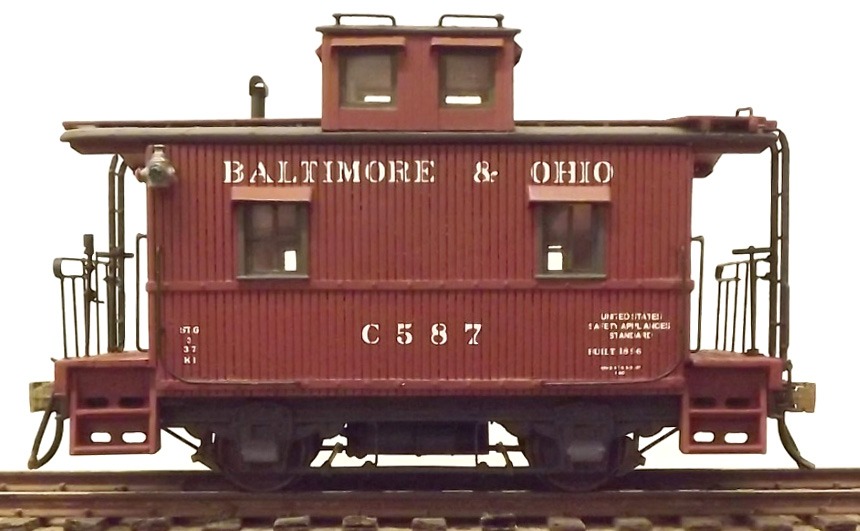
B&O C587 in O scale: A ‘new’ car that is really 66 years old, now in ATSF Mineral Brown and lettered with a special O scale B&O caboose decal set produced in 2012. No interior or underbody details. It’s not a contest piece. The small windows with their ‘black out’ shades made from ribbon (required during WW II) precluded seeing much inside. The underbody toolbox was kept, following the prototype photo. B&O ordered them to be removed from all cabooses so equipped by 1943.
When I posted the above photo, someone asked where the marker light brackets were for the other end. Somehow, I had overlooked those parts, which were on the scratch-built K-1.
Some soda pop can aluminum, snips, a brass rod, a ruler, razor blade, file and tweezers fixed that in a couple of minutes.
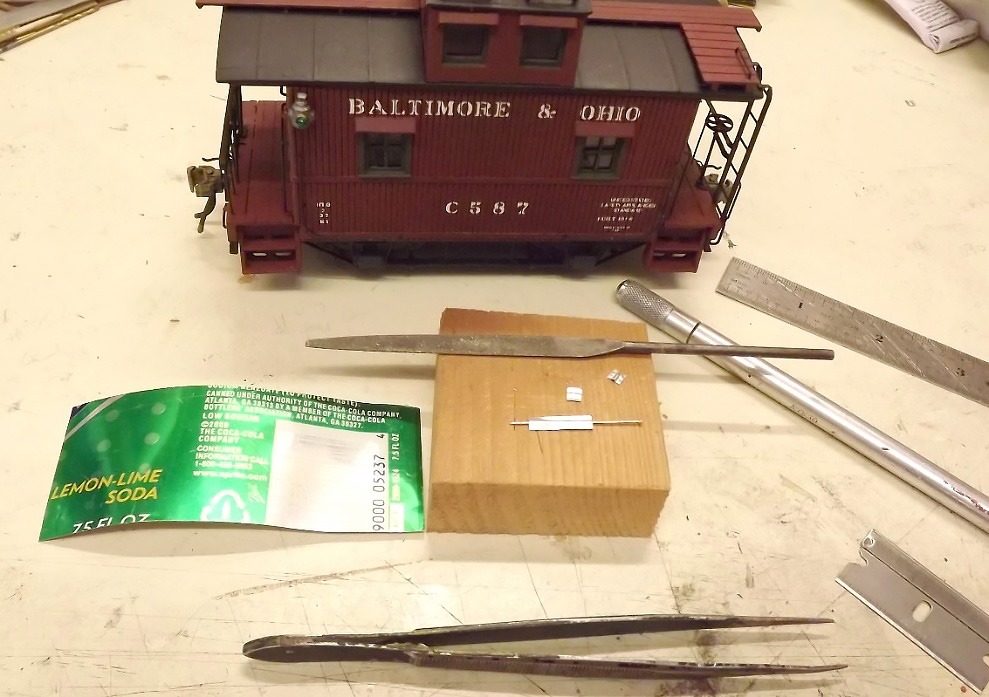
A touch of Walthers GOO and a dab of paint followed:
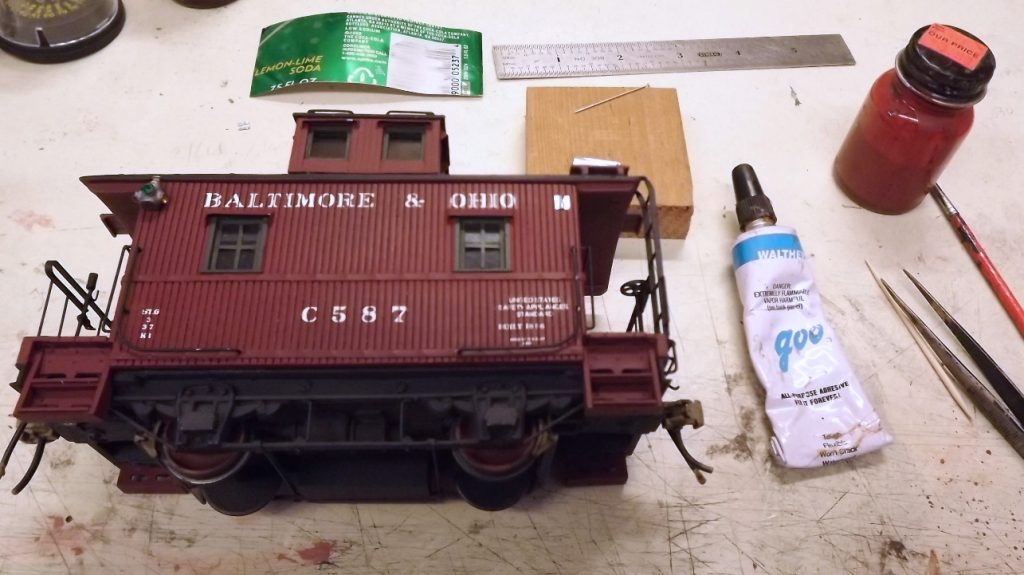
And there we are, complete at last! When I bought that expensive $5.15 kit in 1953 ($49.29 in 2019 dollars!), my father told me I wasted my hard-earned chore money on such a foolish thing.
Well Dad, I still have it 66 years later and this is what it looks like now!
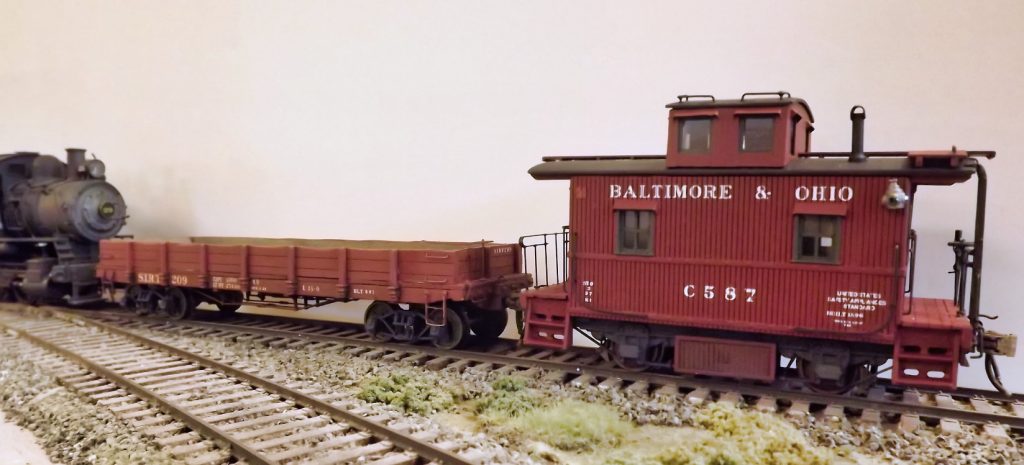
Edward F. Bommer January 20, 2019